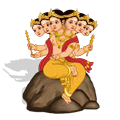























Sunrise06:18
Sunset17:43
Moonrise06:39
Moonset19:29
Shaka Samvat1799 Easwara
Lunar MonthPhalguna
WeekdayCevvai
PakshaShukla Paksha
TithiThuthiyai upto 03:35, Mar 06
NakshathramUthirattathi upto 01:53, Mar 06
YogaShubha upto 19:28
KaranaBalava upto 14:19
KaranaKaulava upto 03:35, Mar 06
Rahu Kalam14:52 to 16:18
Gulikai Kalam12:00 to 13:26
Yamaganda09:09 to 10:35
Abhijit11:38 to 12:23
Dur Muhurtam08:35 to 09:20
Dur Muhurtam22:44 to 23:34
Amrit Kalam20:28 to 22:16
Varjyam09:40 to 11:28
Anandadi YogaSiddhi upto 01:53, Mar 06
Tamil YogaAmrutha upto 01:53, Mar 06
Anandadi YogaShubham
Tamil YogaSiddha
Notes: All timings are represented in 24-hour notation in local time of Cambridge, United States with DST adjustment (if applicable).
Hours which are past midnight are suffixed with next day date. In Panchang day starts and ends with sunrise.



 Dhanu
Dhanu Moolam 06:30
Moolam 06:30

 Kumbha
Kumbha Avittam 16:38
Avittam 16:38

 Meena
Meena Uthirattathi 25:53+
Uthirattathi 25:53+

 Meena 28:43+
Meena 28:43+ Revathi 28:43+
Revathi 28:43+

 Mesha
Mesha Aswini 07:15
Aswini 07:15

 Vrishabha
Vrishabha Karthigai 11:02
Karthigai 11:02

 Vrishabha 24:20+
Vrishabha 24:20+ Rohini 12:04
Rohini 12:04

 Simha
Simha Pooram 25:31+
Pooram 25:31+

 Kanya 06:09
Kanya 06:09 Chithirai 16:52
Chithirai 16:52

 Tula 07:24
Tula 07:24 Visakam 13:04
Visakam 13:04

 Vrishchika
Vrishchika Anusham 12:12
Anusham 12:12

 Vrishchika 12:11
Vrishchika 12:11 Kettai 12:11
Kettai 12:11

 Makara
Makara Uthiradam 16:52
Uthiradam 16:52

 Makara
Makara Thiruvonam 19:37
Thiruvonam 19:37Tamil Panchangam is used by the Tamil population in Tamil Nadu, Puducherry, Sri Lanka, Malaysia and all over the world. Tamil Panchangam has great significance in Tamil Culture and is deeply rooted in the faith of the Tamil Hindus. Tamil Panchangam shows important astronomical elements like Tithi, Nakshatram, Yoga, Karna, Rahu Kalam, Gulikai Kalam etc.
One should avoid Rahu Kalam, Yamagandam, Gulikai, Durmuhurtham and Varjyam as these time periods are not auspicious. The rest of the time left after eliminating them is considered Shubh.
The Abhijit Muhuratam and Amrit Kalam are considered auspicious. If inauspicious time overlaps with auspicious time then the inauspicious time period should be removed from the auspicious time window.